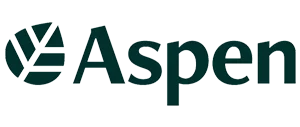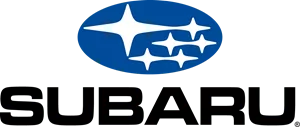CAN/ULC S536-04: The Standard For Inspection And Testing Of Fire Alarm Systems
Fire safety is a critical concern. It can cause massive destruction, loss of lives, and ruin economic prosperity. The data supports this assertion. In 2022, based on the National Fire Protection Association (NFPA)’s research, over 1.5 million identified fires occurred in the United States alone. There were nearly 3800 fatalities, and property worth $18 billion was destroyed in such cases. All these facts are shocking, right?
Governments set a variety of guidelines and recommendations to address fire-related issues, one of which is CAN/ULC S536-04. CAN/ULC S536-04 is an extensive standard that lays down guidelines for ensuring the efficiency and reliability of planning, installation and maintenance of fire alarm systems.
CAN/ULC S536-04 is a joint venture between the Canadian Standards Association (CSA) and Underwriters Laboratories Canada (ULC). Its main goal is to provide comprehensive criteria for testing or inspecting fire alarm systems in buildings to protect individuals’ lives.
Understanding the intricacies of CAN/ULC S536-04 is important for those who are engaged in planning, implementing or maintaining fire alarm systems. In this blog, we will see the key aspects of this standard, its scope, requirements, and implications for stakeholders across the industry.
Save Thousands Of Dollars With Coggno Prime Subscription
What Is The Importance Of Fire Alarm Systems?
Fire alarm systems are early warning mechanisms that detect the presence of fire or smoke and alert occupants to evacuate the premises swiftly. They significantly mitigate the impact of fire incidents, help organizations avoid casualties and minimize property damage by facilitating prompt response and intervention.
Overview Of The CAN/ULC S536-04 Standard
What Is The Purpose Of The CAN/ULC S536-04 Standard?
CAN/ULC S536-04 ensures that fire alarm systems are properly designed, installed, tested and maintained. The main aim of the standard is to improve the dependability and efficiency of these systems by providing definite guidelines and performance criteria for fire detection and response capabilities.
What Is The Scope Of The Application?
CAN/ULC S536-04 has a broad scope, including various types of fire alarm systems such as conventional, addressable and hybrid configurations. This standard applies to new installations and retrofitting projects for several residential, commercial and industrial occupancies.
What Are The CAN/ULC S536-04 Compliance Requirements?
To satisfy CAN/ULC S536-04, stakeholders must follow certain design and installation guidelines, conduct regular testing and inspection exercises and maintain comprehensive records of system performance. Not adhering to these demands may result in penalties, lawsuits or compromised safety.
Online Fire Safety Certification and Training Programs
Understanding Fire Alarm Systems
What Are The Components Of A Fire Alarm System?
A fire alarm system has multiple components working together to detect and notify in case of fire. Among these components include:
- Control Panel: This is the main nerve center of the fire alarm system. It gets signals from detectors, sets off alarms and coordinates response actions.
- Detectors: These devices sense smoke, heat or flames and activate an alarm signal upon such senses.
- Notification Devices: Audible and visual alarms, such as sirens, strobes, and speakers, inform occupants and responders that there is a fire outbreak.
What Are The Different Types Of Fire Alarm Systems?
There are different types of fire alarm systems, each with different features for different places.
- Conventional Fire Alarm Systems: Use a zone-based detection technique, where the protected area is divided into separate zones, making it easy to identify where alarms occur.
- Addressable Fire Alarm Systems: Utilize intelligent detectors with unique addresses, which allow accurate identification of the source of an alarming condition while offering more flexibility to the system.
- Hybrid Fire Alarm Systems: Employing elements from conventional or addressable systems to offer cost-effectiveness and functionality.
Must Read: Best Fire Alarm Safety Certification Courses 2024
Key Requirements Of CAN/ULC S536-04
What Are The Design And Installation Guidelines For Fire Alarm Systems?
CAN/ULC S536-04 provides detailed guidelines for the design and installation of fire alarm systems, covering aspects such as:
- System Layout: It determines the placement and configuration of detectors, notification appliances and control panels for comprehensive coverage and prompt dissemination of alarms.
- Wiring Requirements: It ensures proper wiring practices, grounding techniques, and electrical compatibility to maintain system integrity and reliability under normal conditions or crises.
- Documentation Standards: They establish procedures for preparing design drawings, equipment specification sheets, and record-keeping protocols. They also enable system commissioning, testing, and maintenance activities.
CAN/ULC S536-04 Fire Alarm Inspection & Testing Course
What Are The Testing And Inspection Procedures For Fire Alarm Systems?
It is important to regularly test and inspect fire alarm systems to ensure they function properly and meet the required standards. CAN/ULC S536-04 gives a clear procedure on how to go about it:
- Routine Testing: This includes regularly checking detection devices, notification appliances, and system interfaces to confirm proper functioning and reactivity per design stipulations and performance criteria.
- Periodic Inspection: Such actions incorporate general visual investigations plus operational inspections of all the system elements, like control panels and power sources alongside wiring links and backup batteries, to identify deficiencies and ensure continued reliability.
- Reporting Requirements: These involve documenting comprehensive reports detailing inspection findings, along with logs containing test results and after-service maintenance records. These prove compliance with statutory conformity rules while making sure that there is constant administration.
Must Read: Fire Safety Training: Key Elements, Importance, And Benefits
What Are The Benefits Of CAN/ULC S536-04 Compliance
Benefits include:
Enhanced Safety
By meeting the requirements of CAN/ULC S536-04, the safety and security of occupants are improved by ensuring that fire alarm systems function properly under different situations. Observance of the stringent regulations mentioned in CAN/ULC S536-04 ensures stakeholders that their fire alarm systems have been designed, installed, and maintained to meet the highest standards associated with this industry.
Minimized False Alarms
One of the main advantages associated with complying with CAN/ULC S536-04 is that it helps reduce false alarms. False alarms may lead to complacency over time, disrupt occupants or strain emergency response resources. False alarm incidents can be minimized by implementing strict testing and inspection protocols, as established in this standard, making fire alarm systems more credible and effective.
Legal And Insurance Compliance
In many instances, compliance is a requirement for building codes, fire regulations and insurance policies. Failure to comply with these rules could result in fines, penalties, and legal obligations, among other things. By complying with the standard, insurance providers may offer discounts on premiums or better terms.
CAN/ULC S537: The Canadian Standard For Verification Of Fire Alarm Systems
What Are The Challenges Involved In Implementing The CAN/ULC S536-04 Standard?
Some of the challenges that are involved in implementing the CAN/ULC S536 standard are:
Technical Complexity
Designing, installing and testing fire alarm systems can be complicated and require expert knowledge, skills and resources. Complying with CAN/ULC S536-04 may involve working through technical specifications, interpreting legislation and incorporating different system components into a cohesive whole. Consequently, those concerned may have to overcome obstacles related to optimizing system designs during implementation, the installation process and troubleshooting.
Training And Certification Needs
In accordance with CAN/ULC S536-04, compliance requires continuous training and certification. This includes training programs that cover system design principles, code compliance strategies, and methods used in testing and troubleshooting errors. Obtaining appropriate certification by recognized organizations indicates competence in upholding the standard’s requirements, showing credibility and professionalism.
Methods And Techniques Of Training
Cost Implications
Investing in compliance with CAN/ULC S536-04 involves various costs, including equipment procurement, labor used during installation, training expenses, and maintenance costs. While these investments improve fire safety and regulatory compliance, they can be difficult for building owners, developers, and facility managers, especially when budgets are constrained. To get the best of both worlds and ensure the system’s long-term sustainability, organizations must balance cost considerations and safety requirements.
What Is The Industry Impact Of CAN/ULC S536-04?
Effect On Manufacturers
Adopting the CAN/ULC S536-04 triggers innovation and standardization in product development. The requirements provided by the standard are rigorous, as they determine the quality level of a product, its reliability and interoperability in use. Thus, the developers must concentrate on research and development to produce advanced detection technologies, resilient communication protocols and intuitive interfaces that adhere to CAN/ULC S536-04’s specifications.
Influence On Installation Companies
Installation companies dealing with fire alarm systems cannot do without CAN/ULC S536-04 to keep their position in this industry. These entities need to train and certify their team to comply with the said requirements. Furthermore, it allows them to maintain their clients’ trust, resulting in repeat business and long-term goodwill.
Impact On Building Owners And Managers
Building proprietors and supervisors are ultimately positioned to ensure that their properties comply with CAN/ULC S536-04 and other relevant fire codes and standards. Moreover, ensuring compliance with this standard is important for occupants’ safety and helps one avoid financial and legal risks connected to fire cases. By having fire alarm systems consistent with the standards and continuously maintaining them, building owners can guard their investments from harm while meeting the due diligence expectations of those who live in them.
What Is The Future Outlook For CAN/ULC S536-04?
Emerging Technologies
Development in fire alarm technologies has taken place over a long period of time, which has resulted in new improvements such as improved detection accuracy, system integration and remote monitoring capacities. The next lines of development for fire alarms could include artificial intelligence, IoT connectivity, or predictive analytics to improve responsiveness and reliability in detecting and mitigating fire hazards.
Potential Revisions And Updates
CAN/ULC S536-04 may undergo periodic revisions and updates since fire safety standards evolve in response to changing technologies and regulatory requirements. Stakeholders need to be aware of the proposed changes while engaging in standard development processes so that the standard does not become irrelevant, ineffective or non-feasible in addressing emerging challenges and opportunities.
Fire Prevention Awareness VR Activity
Global Adoption Trends
The principles and guidelines underpinning CAN/ULC S536-04 are consistent with international standards and best practices for fire alarm system inspection and testing. Therefore, its principles can serve as a benchmark for comparable standards adopted worldwide. Through collaboration among global stakeholders, it would be possible to harmonize fire safety requirements, thereby promoting cross-border acceptance of conformity certificates.
Frequently Asked Questions (FAQs)
Q. Who is responsible for complying with the CAN/ULC S536-04 standard?
A. Stakeholders who participate in designing, installing, checking and servicing fire alarm systems are supposed to adhere to CAN/ULC S536-04. They include manufacturers, installers, technicians, building owners and managers.
Q. What are the main differences between conventional and addressable fire alarm systems?
A. While conventional fire alarm systems use zone-based detection, addressable ones use intelligent devices with unique addresses that enable the identification of alarms’ exact locations.
Q. How often should fire alarm systems be tested and inspected?
A. Fire Alarm Systems must be subjected to scheduled periodic tests and inspections as specified under CAN/ULC S536-04 or at other times determined consistent with system design parameters and operational needs.
Q. Can existing fire alarm systems be upgraded to meet the standard?
A. Yes, existing fire alarm systems can be updated and retrofitted to comply with CAN/ULC S536-04 through appropriate modifications, additions or improvements.
Q. Is training available for individuals involved in fire alarm system installation and testing?
A. Yes, recognized organizations and training providers offer training programs and certifications that give individuals the knowledge and skills they need to meet CAN/ULC S536-04 requirements. Visit Coggno to meet your training needs.
Q. What role do certification bodies play in ensuring compliance with the standard?
A. Certification bodies check whether individuals and organizations that design, install, test, or maintain fire alarms comply with CAN/ULC S536-04.
Q. Are there any exemptions to the requirements of CAN/ULC S536-04?
A. Exemptions from meeting the CAN/ULC S536-04 standards can only be granted under exceptional circumstances, subject to regulatory approval, and if their justification is based on safety considerations, technical reasons or operational concerns.
Q. How can I stay updated on revisions and amendments to the standard?
A. Stakeholders aiming to stay updated about the revision or amendment of CAN/ULC S536-04 can look into official publications, websites and communication channels of standard development organizations, regulatory bodies and fire safety industry associations.
Bottom Line
It brings us to the end of the article. We hope we have been able to explain CAN/ULC S536-04 to you. To learn more about compliance with fire alarm systems and training opportunities, visit Coggno marketplace. We provide online courses and certifications in fire safety and related disciplines.




















